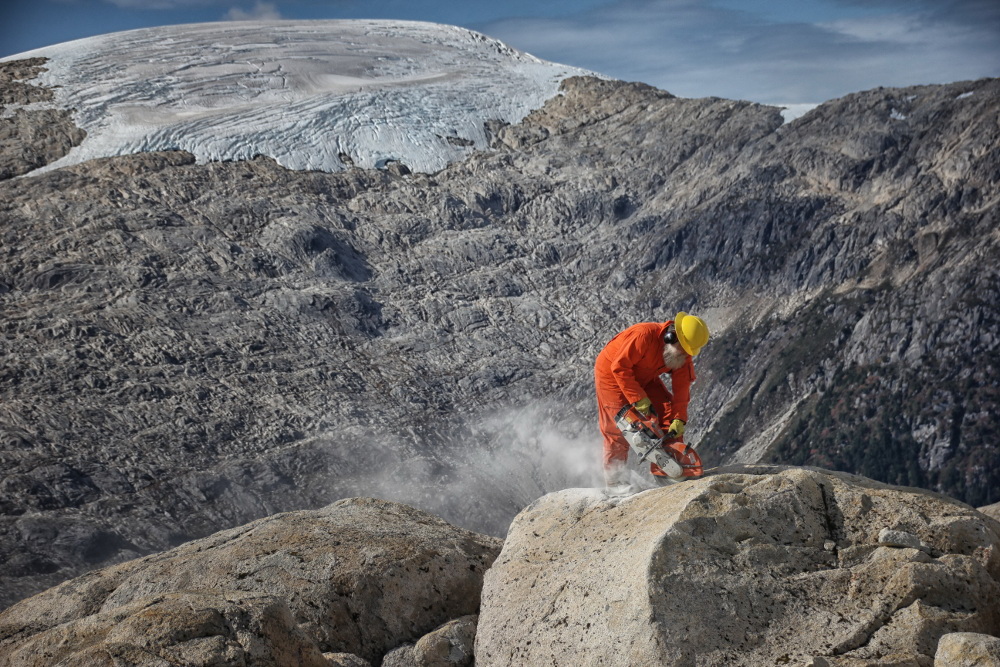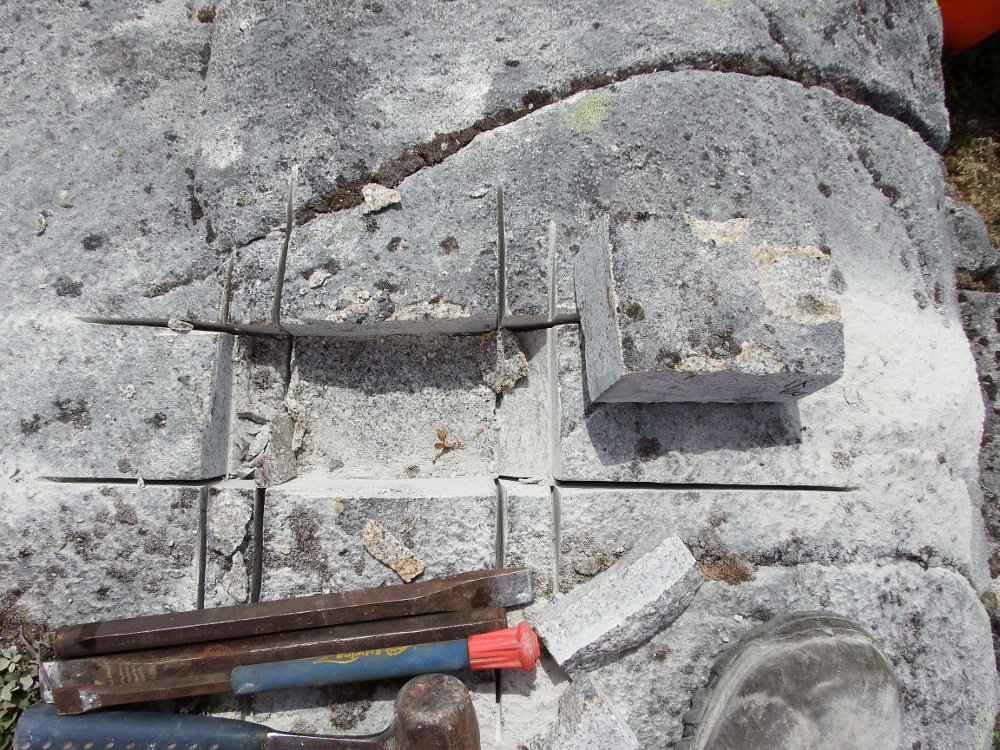
A relatively new technique for dating rock is being used in Southeast Alaska and it’s rewriting the area’s geologic, and possibly anthropologic, history. While it’s understood that ice likely covered most, if not all, of the islands and mainland of the current day Alexander Archipelago, it now appears to have retreated from parts of the panhandle thousands of years earlier than scientists originally thought.
Tens of thousands of years ago, the Cordilleran Ice Sheet covered western Canada and parts of Alaska, including the Southeast panhandle.
“At 17,000 years ago you can imagine there was a really thick, basically a wall of ice that was covering most of the region at that time,” explained Alia Lesnek, now a post-doctoral scholar at the University of New Hampshire.
“But by 15,000 years ago, most of the region was ice free,” Lesnek said. “There may have been some small glaciers up on high elevation mountain summits and sort of the inland part of Southeast east of Ketchikan but places like Ketchikan and Wrangell, they were all completely ice free by 15,000 years ago. So it was a pretty dramatic change.”
Lesnek was the lead author on a research paper published this year. It was her PhD research through the University at Buffalo, a graduate student-led project with cooperation by the U.S. Forest Service. The researchers used a new method of dating the rock which measures chemical changes from cosmic radiation.
These changes happen over time, as the surface of the rock is exposed to the atmosphere. Lesneck and others used the technique to focus on the western part of this region in findings published in 2018. This latest work looked at the ice retreat father inland.
Another author on the paper, Jason Briner is a geology professor at the University at Buffalo and Lesnek’s advisor on her doctoral studies. He’s done other research in Southeast Alaska, where the contemporary rainforest vegetation makes it difficult to find the right samples of ancient rock.
“It’s been a very challenging place to do field work and for that reason the history of the Ice Age and the ice sheet fluctuations during the Ice Age aren’t known, historically aren’t known very well in Southeast Alaska compared to other parts of the world that had ice sheets,” Briner explained.
The rock dating technique has allowed scientists to push back the dates of the beginning of ice free areas in Southeast to around 17,000 years. Older ice-free areas have yet to be found but Briner said they’re still looking. Human migration and settlement of the area may have depended on the absence of ice.
“We were expecting to see some landscapes that are quite old, that would have been available for human migration, even during the ice age and the oldest landscapes we could find dated to about 17,000,” he said. “And it seems like the ice sheet may have covered all of the Southeast Alaska archipelago although that’s a problem we’re still working on.”
The oldest human remains discovered in the region date back to 10,300 years ago. Those were found in a small cave on Prince of Wales Island in 1996. But because of sea level rise since the end of the Ice Age, traces of the oldest humans in this part of the world may be deep under water. Animal bones have also been found in that cave from well before and well after the ice sheet may have covered it.
Jim Baichtal is the forest geologist for Forest Service on the Tongass National Forest. He and former Tongass employee Alex Lyles also worked on this project.
“I think one of the really fun aspects of this research has been when I first moved to Southeast Alaska in 1990, everything that was written said we were blanketed by ice to the edge of the continental margin until 10,000 years ago,” Baichtal said. “The discoveries in the cave and other research has changed that as we move through time and then this has really pushed it back, saying that you know there was exposed land and opening starting at about 17,000 years ago, much, much sooner than we thought.”
Baichtal is hopeful that not all evidence of ancient human migration is underwater. He thinks there could be sites, like Kruzof Island near Sitka, that simply haven’t been found.

This deep dive into Alaska’s geologic past has relevance for the present. Alia Lesnek thinks Southeast’s glacial history could provide insights into present-day ice caps.
“We had these oscillations between very cold climate states, similar to an ice age and warm climate states that are similar to now, that were happening every 2000 years roughly,” she said. “And the fact that the Cordilleran Ice Sheet reacted so quickly and so dramatically to one of these warm climate states really highlights that these ice sheets that are in contact with the ocean are very sensitive to climate change. That really can help put into context some of the modern changes that we’re seeing in places like Antarctica and in Greenland.”
And once the ice recedes, colonization by plants and animals begins. Ongoing research in Southeast Alaska will tie together the geologic history with the DNA left behind by the life forms that moved in soon after.









